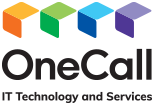Over the last two years, the work environment has changed for virtually every organisation around the world – including New Zealand.
As we moved through lockdowns where all but our most essential workers were at home, and then into lesser versions of those lockdowns and now to a new phase where many office workers are either completely back in the office or doing a hybrid combination of work in the office and work from home, the challenges for IT systems continue to evolve.
OneCall has been working with a wide range of client organisations who have different requirements of their staff, but all of them have had to adapt their systems to ensure staff could be as productive and supported as possible, no matter where they are located.
Some of the key IT questions asked and answered are below:
1. Can my team work remotely and access everything they need?
If you haven’t already made the move to cloud based servers and systems, now is the time. The cloud offers your team remote access to business-critical information and applications, meaning you can continue to work as normal wherever your desk is located.
A move away from on-premise to cloud-based solutions doesn’t just strengthen your business in times of pandemics or disasters – it brings a wealth of other benefits too:
- Scalability: Instantly increase your business’s storage capacity, computing power and access to software with truly scalable solutions.
- Ultimate security: Automatic security and software updates remove the need for ongoing maintenance and management, and keep your data and systems secure.
- No capital expenditure: All-inclusive ‘software as a service’ subscription models allow you to pay as you go, rather than investing thousands in software licenses and hardware. Only ever pay for what you need.
- Remote collaboration: Say goodbye to overnight updates and clunky collaboration. Live updates allow you to remotely collaborate in real-time.
- A single source of truth: The cloud offers total document control. You can ensure there are no conflicting files, and all team members have instant access to one version of truth.
- Automatic back-up: Minimise the risk of lost data with cost-effective up to the minute back-ups and recovery solutions.
2. Balancing accessibility with security
Your staff need to have access to all the systems and information they require to do their jobs, but this access can’t be at the expense of organisational security. Your second consideration will be about finding a balance between accessibility for staff while they are working from home and security requirements. Ask yourself: how secure can you make your systems without impacting the productivity of your workers?
There are now many sophisticated ways in which you can ensure secure access for employees while minimising the risk of infiltration by outside threats. Setting up multi-step authentication and providing each team member with access permissions only to the areas of your networks that they truly need are two simple and effective strategies that will reduce risk.
3. Remote access to phone systems
Using cloud based systems can also ensure that your organisation has uninterrupted access to their telephone systems. Not only that, this tech can also seriously reduce ongoing costs.
Users of cloud-based private branch exchange (PBX) phone systems can communicate internally with each other for free, and externally using VoIP, ISDN or analogue technologies. These systems enable you to have more phones than you have physical phone lines, and provide a wealth of features that standard systems don’t, all at a lower price.
In situations where your team are all working offsite, PBX systems truly come into their own. The user can bring the system with them wherever they are through the use of a phone or desktop app.
Combine this with the remote access that a cloud-based business system offers, and an office can be set up anywhere with a decent internet connection, allowing BAU with no impact on your customers.
4. Ensuring video conferencing tech is fit for purpose
Nothing quite compares to face-to-face communication, which means that your video conferencing software needs to be up to scratch for the requirements of your business.
Choosing the right video conferencing software solution is key, particularly if some of your team might be working from areas with slow or inconsistent internet. You’ll need a solution that will provide a reliable service no matter where people might be dialling in from or how many people join the call.
There are an increasing number of solutions now available, ranging from the free options like Zoom (up to 40 minutes per call) and Google Meet, through to the video calling built into Microsoft Teams and other solutions like Verizon’s BlueJeans.
Be aware that your staff are not always in charge of setting up a video call, so ensuring they can accept calls from clients or customers outside your organisation who might be using other platforms is also key.
Other video conferencing considerations include:
- How simple is it to install and use?
- Is it a solution that your customers and suppliers also use?
- Is it competitively priced?
- Is it compatible with your hardware?
- Do your team have access to webcams and headsets at home?
Keep in mind that the last two years have seen so many workers – and students, using tools like Zoom for meetings, events, classes and more, that a new code of operation for video calls has emerged.
Most people in group calls now prefer to have their cameras turned off, which not only saves on bandwidth, it also puts less stress on individuals to be ‘always on’, especially if they are in multiple calls each day.
Being able to use the text chat function while someone is speaking is also important and a lot of communication can happen between team members during the course of a meeting, particularly during content that might not specifically relate to their part of the business.
5. Is my team as engaged and productive when they are wfh?
Motivating and engaging a remote workforce can be a real challenge. Trading the energy of the office for a quiet seat in their dining room can see many workers struggling to get through their work, particularly those that gain energy from being around others. Alternatively, many workers have found they are more productive without the distractions of an office.
So how can you recreate this engagement when everyone is working remotely? Considerations include:
- Consistently reiterating goals, and updating your team on its progress.
- Scheduling more regular touchpoints than what you would in-office, both with individuals and teams. Employees will often need more contact working remotely than they otherwise might.
- Humanise contact by trading email and instant messaging for voice and video calls – but don’t overdo it!
- Avoid nit-picking, and instead, focus on results. It’s not important that an employee is working in an old pair of track pants or from their kid’s room, as long as goals, KPIs and deadlines are met.
If there was ever a perfect time to get a business continuity plan in place, now is it.
Fortunately, it’s now easier than ever to get your entire organisation working remotely. The cloud and other technologies have made this way of working not only achievable, but in many cases cheaper and more efficient than a traditional office setup.


